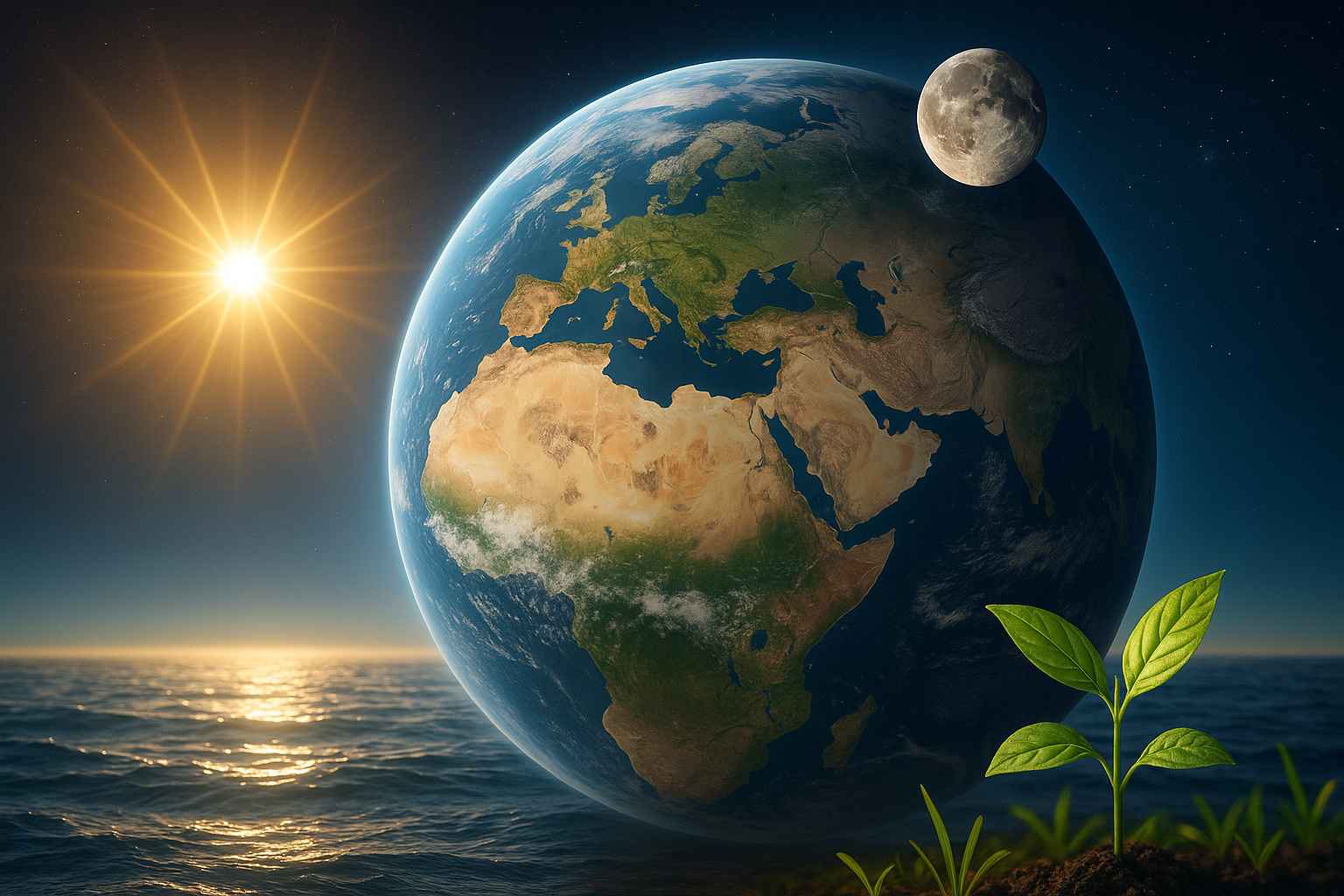The story of life on Earth is one of remarkable coincidence, delicate balance, and profound interdependence. From cosmic forces to microscopic molecules, a set of vital elements came together to make our living world possible. Understanding these building blocks not only offers a window into our past but also helps us appreciate the fragility and uniqueness of life as we know it.
1. Liquid Water

Water is the cornerstone of all known life. Its unique chemical properties—like its ability to dissolve a vast range of substances and its high heat capacity—make it ideal for regulating biological processes. Liquid water exists on Earth due to our planet’s perfect distance from the Sun, known as the “Goldilocks zone.”
It facilitates cellular metabolism, nutrient transport, and temperature regulation in living organisms. Oceans, rivers, and rainfall are all part of Earth’s hydrological cycle, maintaining life’s rhythm. Interestingly, water’s solid form (ice) floats, insulating aquatic life during cold seasons—a rare trait among liquids.
2. The Sun’s Energy

The Sun is life’s primary energy source, providing light and warmth that drive photosynthesis and climate systems. Plants convert solar energy into glucose, which feeds nearly all life forms directly or indirectly. Without the Sun, Earth would be a frozen wasteland. Solar radiation also powers atmospheric circulation, influencing weather and ocean currents that distribute heat across the globe. The balance between distance and intensity is vital—too close, and we’d burn; too far, and we’d freeze. This fine-tuned position enables long-term climate stability.
3. Earth’s Magnetic Field
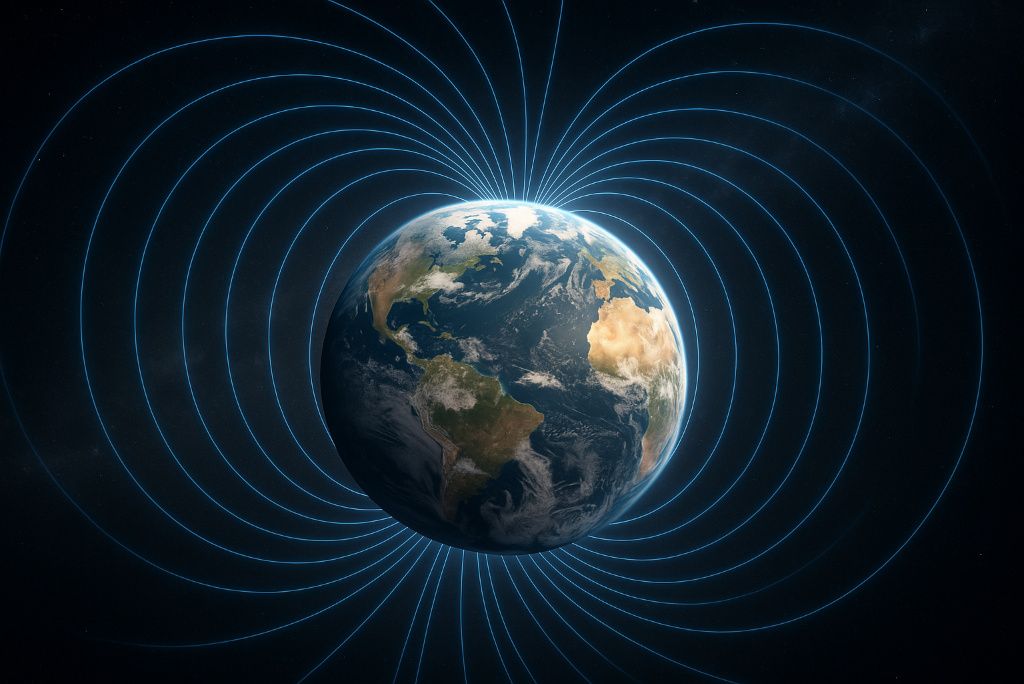
Earth’s magnetic field acts like a giant shield, protecting us from deadly cosmic and solar radiation. Generated by the movement of molten iron in the outer core, it deflects charged particles from the solar wind, which could otherwise strip away the atmosphere. This field also makes compass navigation possible and is critical in maintaining our planet’s climate over long periods. Without it, life on Earth might have never evolved beyond microbial stages.
4. The Atmosphere

Our atmosphere is a life-sustaining blanket of gases, primarily nitrogen (78%) and oxygen (21%), with trace amounts of carbon dioxide and others. It protects life by blocking harmful ultraviolet radiation and moderating temperature swings between day and night. Oxygen supports respiration, while CO₂ is essential for photosynthesis. The ozone layer, part of the stratosphere, filters out UV-B rays, preventing genetic damage in living organisms. The atmosphere also enables the water cycle through evaporation and precipitation. Read more from the National Weather Service.
5. Plate Tectonics
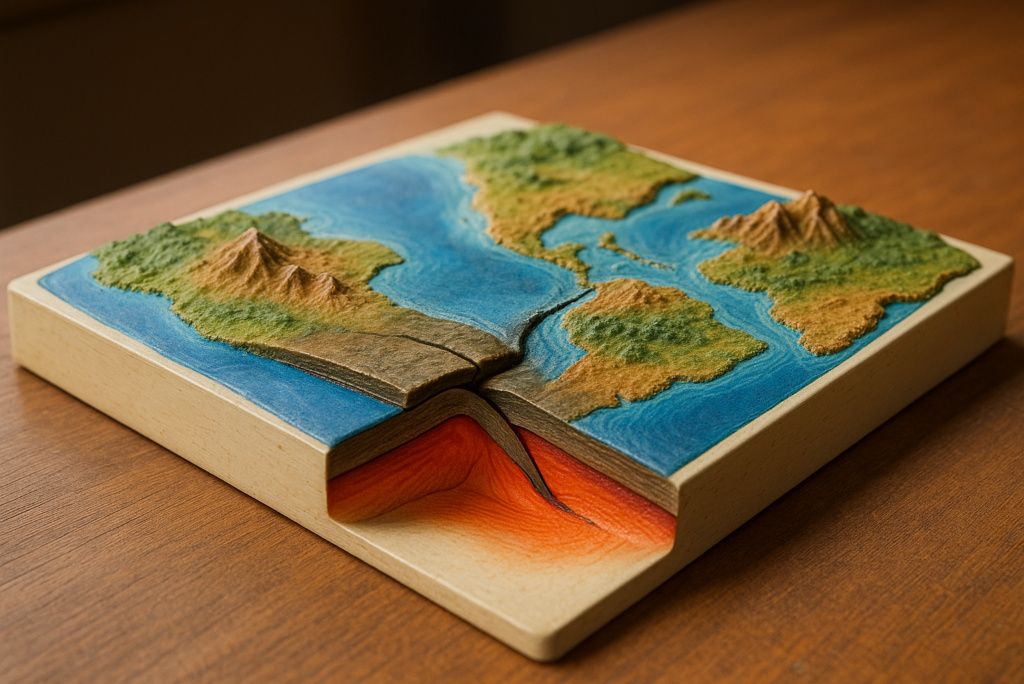
Earth’s dynamic crust, divided into tectonic plates, recycles nutrients and shapes continents. Plate tectonics drives volcanic activity, which releases gases that form the atmosphere and enrich the soil with minerals. This geological activity supports a carbon-silicate cycle that regulates long-term climate by cycling carbon between Earth and the atmosphere. It also contributes to biodiversity by isolating populations, encouraging evolution. Without tectonics, Earth might resemble Mars—geologically dead and lifeless. e USGS.
6. The Moon

Our Moon plays a surprising but critical role in maintaining life on Earth. It stabilises the planet’s axial tilt, which governs the seasons. Without this stabilisation, Earth’s climate could swing wildly, disrupting ecosystems. The Moon also affects tides, which influence coastal ecosystems, nutrient cycling, and even the evolutionary paths of early life. Its formation, likely from a massive collision, also helped shape Earth’s tilt and spin rate. Learn about the Moon’s stabilizing effect.
7. Carbon
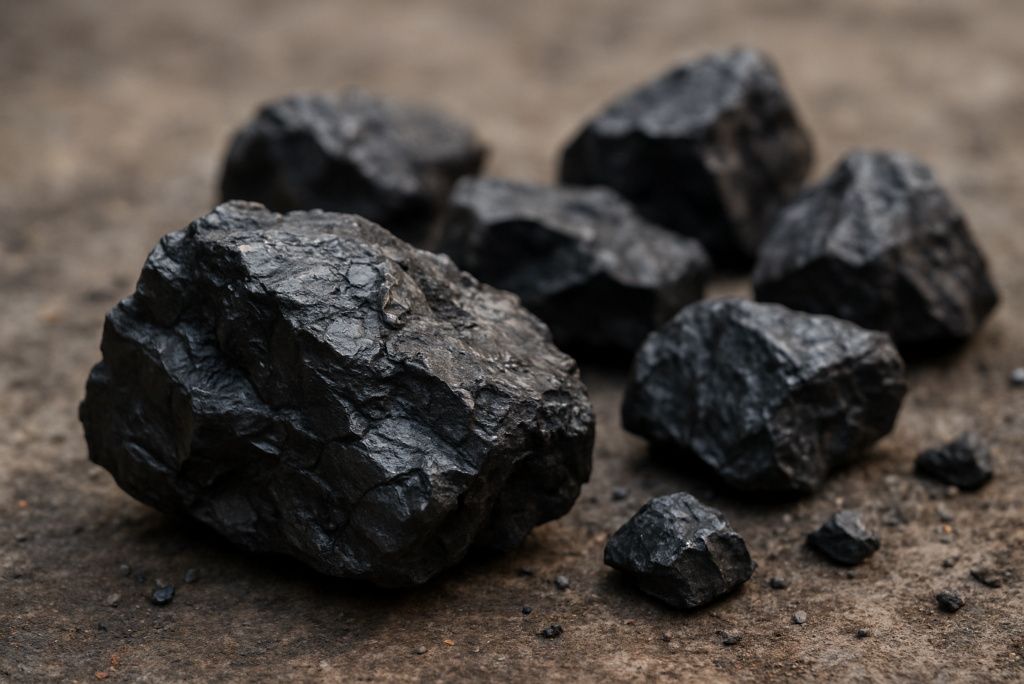
Carbon is the backbone of organic molecules—proteins, DNA, fats, and carbohydrates all depend on it. Its ability to form stable bonds with many elements enables the complexity required for life. Carbon cycles between the atmosphere, oceans, and living organisms, keeping ecosystems in balance. Without it, life as we know it would be chemically impossible. The carbon cycle also moderates Earth’s temperature through carbon dioxide’s role as a greenhouse gas.
8. Oxygen

Oxygen, especially in its molecular form (O₂), is essential for aerobic respiration—the process by which most life extracts energy from food. While early Earth lacked free oxygen, photosynthetic microbes eventually filled the atmosphere with it in what’s known as the Great Oxygenation Event. This transformation enabled complex multicellular organisms to evolve. Oxygen also forms ozone (O₃), which protects life from ultraviolet rays. Smithsonian Magazine details Earth’s oxygen evolution.
9. Nitrogen

Nitrogen makes up the majority of our atmosphere and is vital for amino acids and DNA. However, most organisms can’t use atmospheric nitrogen directly. Instead, bacteria “fix” it into forms plants can absorb—a process critical to agriculture and food chains. This nitrogen cycle ensures a steady supply of nutrients that support all life forms. Human activity, especially through fertilisers, has disrupted this balance, causing environmental challenges like algal blooms.
10. A Stable Climate

Climate stability over geological timeframes has allowed ecosystems to thrive and species to adapt gradually. Earth’s position, axial tilt, ocean currents, and atmosphere all work together to maintain relatively consistent conditions. Ice ages and warm periods have occurred, but not so drastically as to wipe out life entirely. Today, human-driven climate change threatens this balance. The stability of the past gave rise to civilisations; its loss could challenge their survival. IPCC climate reports provide critical insights on this.
11. Photosynthesis

This process allows plants and certain microbes to convert sunlight, water, and carbon dioxide into glucose and oxygen. It forms the base of most food chains and replenishes atmospheric oxygen. Cyanobacteria were the first organisms to perform photosynthesis, changing Earth’s chemistry forever. Forests, algae, and phytoplankton continue to power the biosphere. Without photosynthesis, complex life couldn’t survive.
12. Gravity

Gravity keeps our atmosphere from drifting into space, holds oceans in place, and stabilizes our orbit around the Sun. It also allows for the water cycle, weather patterns, and the formation of stars and planets. Even the structure of our bodies evolved in response to Earth’s gravitational pull. Without gravity, there would be no pressure to support metabolism, circulation, or growth. NASA on gravity’s role in planetary science.
13. Time and Evolution

Life took billions of years to evolve from simple molecules to intelligent beings. Evolution is a slow but powerful process, driven by natural selection, mutation, and environmental changes. This immense timescale allowed for diversity, specialisation, and complexity to emerge. Extinction events like asteroid impacts reset the clock but also open new evolutionary paths. The long journey of evolution underscores how finely tuned life’s development has been.
14. Biodiversity
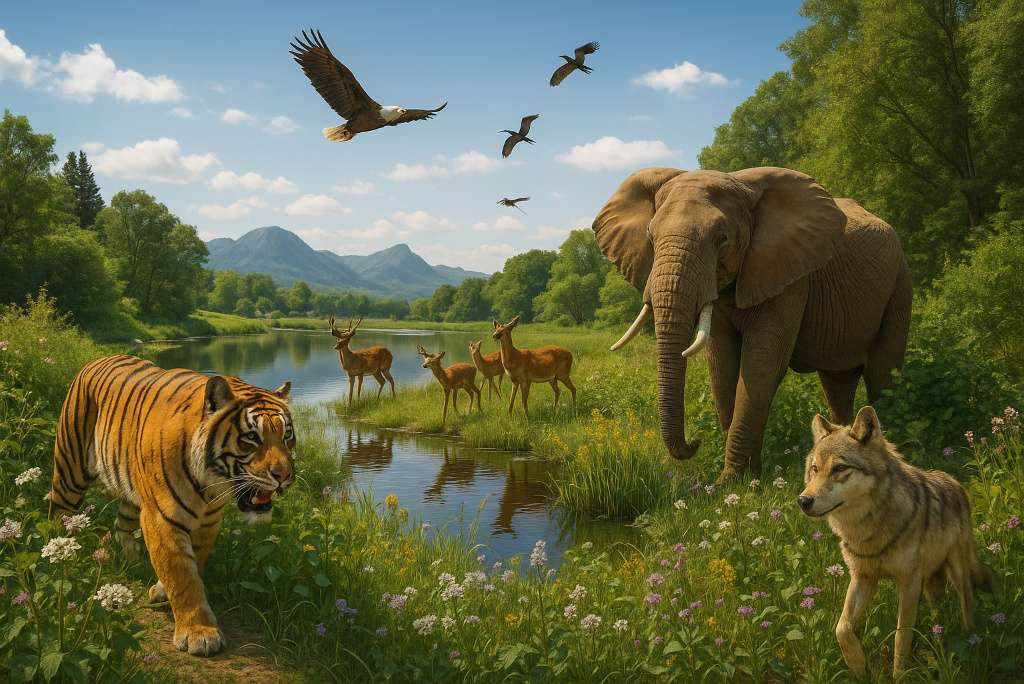
Biodiversity strengthens ecosystems by ensuring resilience and adaptability. Every species plays a role—pollinators sustain crops, decomposers recycle nutrients, and predators maintain balance. Diverse gene pools also help populations survive diseases and environmental shifts. The loss of even a single keystone species can ripple through an ecosystem. Preserving biodiversity means preserving life itself. UN Biodiversity explains the importance.
15. Chance and Cosmic Events
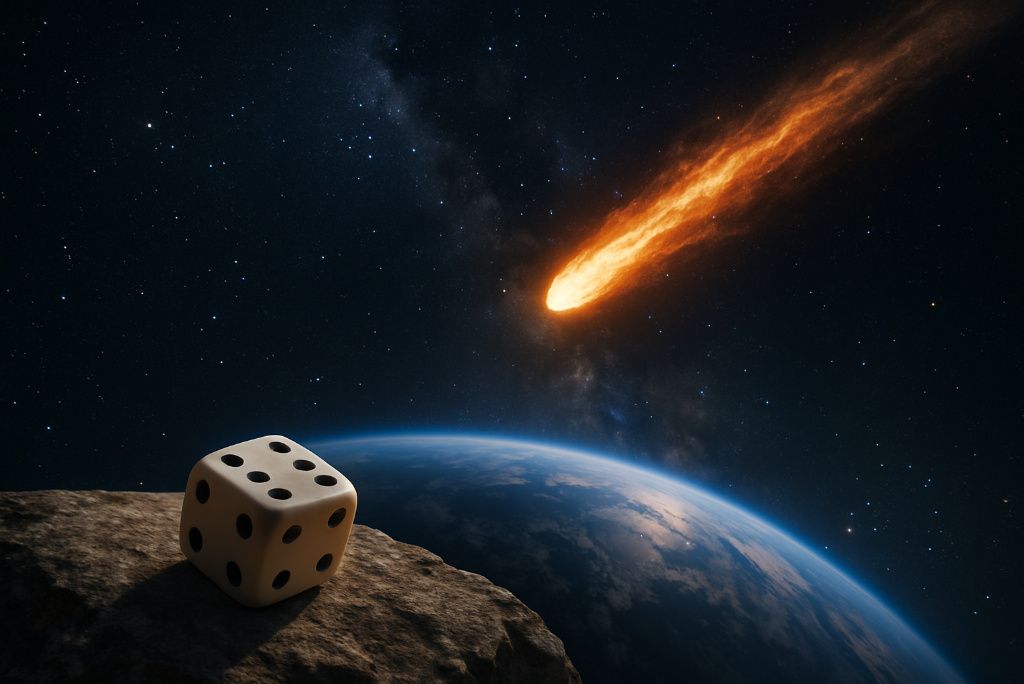
Finally, life on Earth may owe its existence to sheer chance. The planet’s formation, the Moon’s creation, asteroid impacts that shaped evolution, and the avoidance of catastrophic cosmic collisions—these events reflect a delicate dance of randomness and fortune. While science can explain the mechanics, the exact sequence of life-enabling conditions may be unrepeatable. The uniqueness of Earth’s history is a humbling reminder to protect what we have.
Disclaimer: This article is for educational purposes only and does not constitute scientific or environmental advice. For more in-depth information, consult peer-reviewed journals or trusted scientific institutions.

